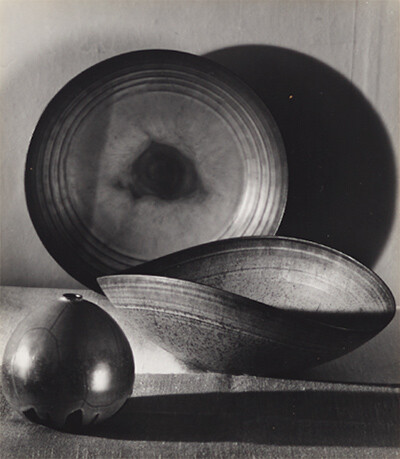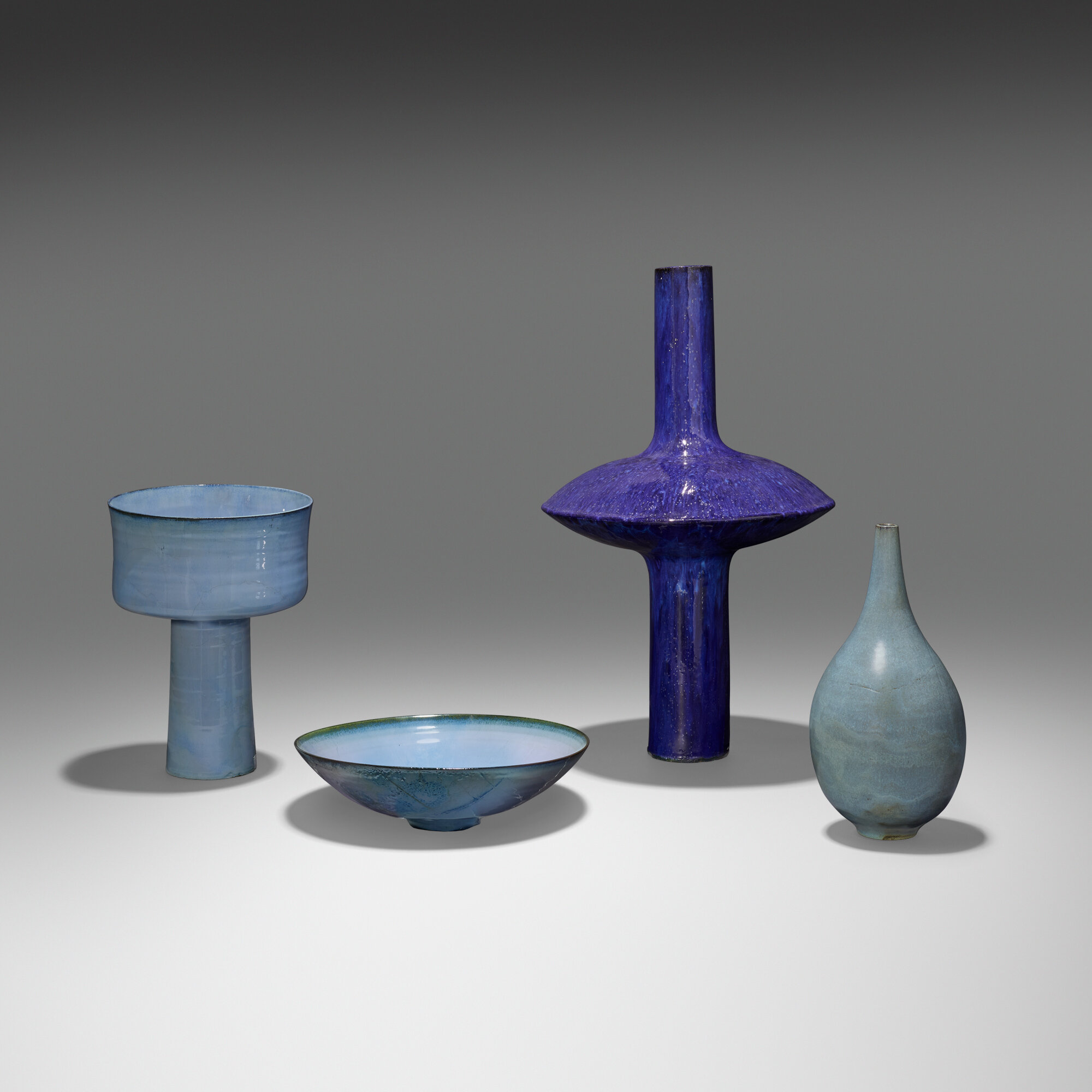444
444
USA, 1978
earthenware with Sang and Blue Reduction Fired Glaze, iridescence, melt-fissures, and fire marks 5¾ h × 7⅞ dia in (15 × 20 cm)
earthenware with Sang and Blue Reduction Fired Glaze, iridescence, melt-fissures, and fire marks 5¾ h × 7⅞ dia in (15 × 20 cm)
estimate: $3,000–4,000
result: $5,250
follow artist
The present work features surface decoration around the top opening.
Signed and dated to underside 'Otto Natzler 1978' with artist's cipher and archive number 'X135'.
provenance: Collection of Otto Natzler





































